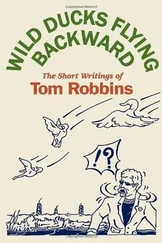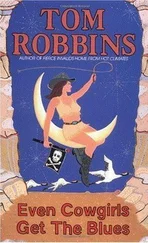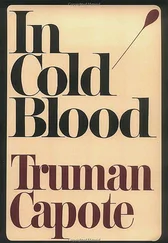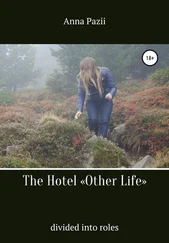I’d never heard of LSD, but the moment Jim spoke those words, a white rabbit the size of a TV preacher’s Cadillac and as preposterous as a unicorn flashed by the restaurant window and vanished down a rain-swept street.
It should go without saying that I was eager to try this LSD stuff. Jim, however, was cautious. “Let’s have lunch again in a week,” he said, then maddeningly turned the conversation back to art. It turned out he wanted to get to know me better, wanted further assurance that I was psychologically stable enough to handle the drug. So, a week later we lunched again, and this time he went into deeper detail about the substance, describing the reactions of the several graduate students to whom he’d administered it in a laboratory setting. He was curious, I think, to see how a subject might respond in a more relaxed, sensually stimulating environment. In any case, by the time we’d finished dessert, Jim, convinced now of my relative sanity, agreed to guide me on a trip the following Tuesday, the day of the week on which I normally made the rounds of the art galleries and thus wasn’t expected at the newspaper.
Jim kept a painting studio in a Wallingford District storefront, and it was there on a quiet street (mixed commercial and residential), that we met. It was 9 A.M. but I’d been awake since six, freighting a load of nervous anticipation. I should make it clear that I’d never smoked marijuana, never been “high” on anything. I’d been intoxicated, of course, but while to this day there are ignorant parties who equate being high with drunkenness, the two conditions are diametrically opposed, the one opening up consciousness the way fifteenth-century explorers opened up new worlds, the other shutting it down like a bankrupt pawnshop. At any rate, I showed up that morning at Jim’s studio with an empty stomach (it’s best that way); dressed, as usual in those days, in faded blue jeans and a nice Italian dress shirt, or as one friend put it, “cowboy below the waist, banker above.”
I took a seat in an old overstuffed chair. Jim handed me a cup of water and three small round blue pills (little bluebirds of happiness): three hundred micrograms of pure Sandoz lysergic acid, right off the plane from the manufacturer in Switzerland. Ceremoniously, for drama’s sake, I swallowed them down and tried to make myself comfortable. In the next eight hours, I would get up from that armchair only once, and that walk to the toilet was like an only slightly condensed version of Homer’s Odyssey. It would prove to be the most rewarding day of my life, the one day I would not trade for any other.
For the first thirty or forty minutes, nothing happened. Nada. Feeling no different than when I awoke that morning, I began to prepare myself for an anticlimax. LSD, this batch at least, was a dud! But then a slow, gentle wave of something like electrical current began washing over me. And… huh? What was this? The natural patterns on the unpainted pinewood wall had transformed themselves into an array, a procession, of tiny Mayan and Aztec figures, the kind one sees in any book on pre-Columbian culture, the kind that adorned pottery, stone pillars, and those manuscripts that managed to escape the bonfires of rampaging Spanish priests: brilliantly colored, oddly geometrical, adorned with quetzal plumes, carrying serpent staffs, daggers, and feathered fans, as if on their way to lunar rituals at Chichen Itza. (Which came first, the chichen or the itza?)
I stared transfixed as their numbers multiplied along the wall. Eventually, though, deciding I’d had enough of them, I closed my eyes. Behind my lids, the Mayan figures just kept on coming. Okay then. All right. This was it. Move over Alice, baby. I was down the rabbit hole at last.
It’s important to note that those teeming pre-Columbian figures were as close as I would come that day to a hallucination, and even that vision really couldn’t be considered hallucinatory because never for one second did I believe that it was real. Like R. Gordon Wasson’s in Oaxaca, my rational mind was fully operative throughout the experience.
Yes, things got weird, but I was aware always that the weirdness was a product of the drug and would in time subside; not that I was in any great hurry to return to the “real” world. For that matter, in a state where Einstein’s theorems were as concrete, as present and obvious as the chair I sat upon, temporal terms such as “hurry” had little meaning. At the end of what for Jim was a long day, I was convinced I’d only been sitting there for a couple of hours. I was on molecular time, cosmic time, not clock time. My system was in harmony with star systems, with the systems of orbiting particles in an indole ring.
It has occurred to me that the so-called hallucinations commonly associated with psychedelic ingestion are in fact diversionary tactics on the part of the ultraconservative human DNA, whose primary objective is always preservation of the species. (From the DNA perspective, every man is but an ambulatory seed package, every woman a walking egg carton.) When subjected to LSD, there is a portion of our brain that, failing to scare us into a “bad trip,” will then roll out amazing fractal 3-D cartoons, hoping that by sufficiently entertaining us, it can divert us from the existential truths the fungoid alkaloids seem mysteriously designed to uncover. For its narrow interests, our DNA puts on a show, hoping to head off a psychic jailbreak.
As for the nature of those truths, the revelations that scare the pants off of the fusty DNA, they may vary slightly from individual to individual, although in almost every instance they possess overtones that can best be described as oceanic, often suggesting some merging of spirituality and theoretical physics. I must confess, therefore, that I cannot fault the late Bill Hicks, who said that on LSD he perceived that “all matter is condensed energy, we are all one consciousness, there’s no such thing as death, life is only a dream, and we’re the imagination of ourselves.”
Let’s not be too quick to jeer Hicks’s choice of words. The psychedelic experience is, I’m afraid, fundamentally resistant to ordinary verbal description, so much so that even a professional novelist can scarcely write about it without swathing his observations in the purple cloak of woo-woo. With that in mind, I shall now attempt to relate with as much reportorial objectivity as possible a taste of the highly subjective and “curiouser and curiouser” business that came my way that day in the storefront studio.
Jim had requested that I bring along my favorite record album, hoping, I assume, to gauge my reaction to familiar music under unfamiliar conditions. The record (vinyl LP, naturally) I selected was Concert by the Sea, by jazz pianist Erroll Garner. About midway through our session, Jim put it on the phonograph. I hated it. The tunes I’d previously so admired sounded clunky, harsh, and arbitrary to me now, and Garner’s once-charming habit of grunting while he played was like noises funneled in from an overheated barnyard. If, however, the experiment was a crude failure on a sonic level, visually it led to one of the richest, most astounding experiences of my life.
Visually? Yes, because as the record played I could see the sound waves emanating from the speakers. It’s well known that psychedelics enhance visual acuity, but even so I might admit that I was feeling the sonic vibrations rather than literally seeing them — except for one significant detail: there was a vase of fresh daisies on the coffee table in front of my chair, and I most unmistakably could see the daisy leaves swaying — almost imperceptibly yet nonetheless gently swaying — in those sound waves. That, however, was merely the preamble.
Читать дальше












